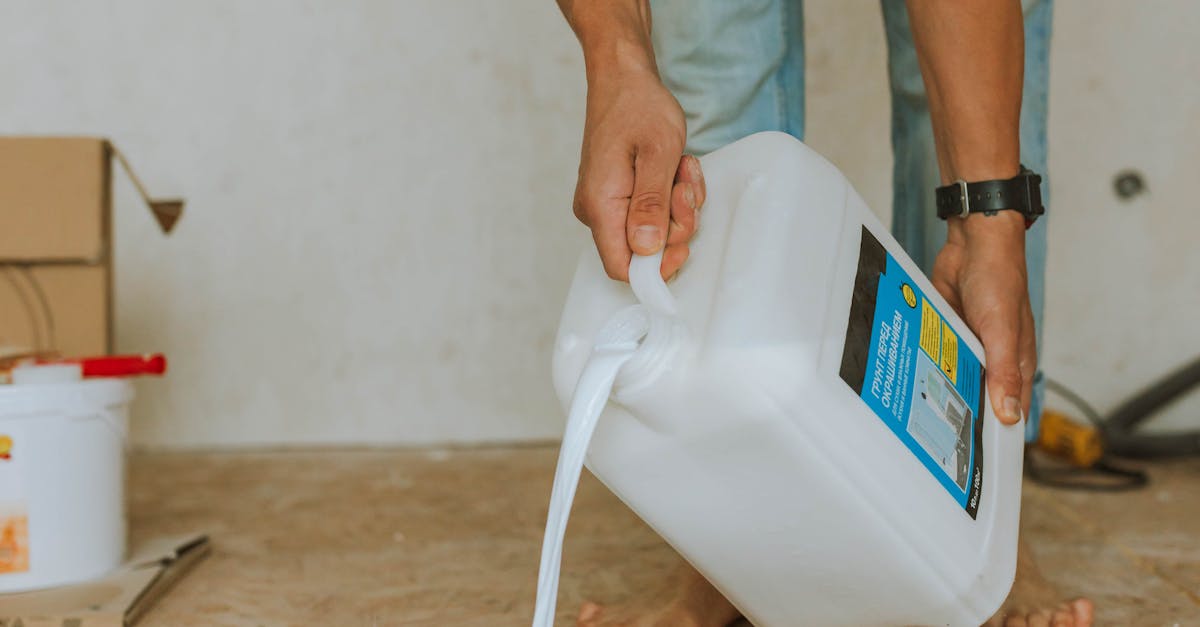
Allowing for Proper Drying Time
Proper drying time is crucial when it comes to floor staining. If the stain does not have adequate time to dry, it can lead to unwanted streaks and blotches. Humidity levels and temperature can greatly impact the drying process. Warm, dry conditions usually facilitate quicker drying times, while cooler or humid environments may require extended periods. Patience during this stage can significantly enhance the final appearance of your stained floor.
Additionally, following the manufacturer's recommendations for drying times can prevent potential complications. It’s often advisable to allow the first coat of stain to dry fully before applying a second coat or finishing product. Testing on a small area can also help gauge drying times in your specific environment. Ensuring that the surface is completely dry not only optimizes the look of the floor staining but also enhances the durability of the finish.
Factors Affecting Drying Duration
Several factors influence the drying duration of floor staining, significantly affecting the overall quality of the finish. Humidity levels play a critical role; higher humidity can prolong drying times, while low humidity conditions may expedite the process. Temperature also impacts drying; warmer temperatures can facilitate quicker evaporation of solvents in the stain. In addition, the application method, whether using a brush, roller, or cloth, can contribute to how evenly the stain spreads and thus affects drying speed.
The type of stain selected for floor staining is another vital consideration. Oil-based stains typically require longer drying times compared to water-based options. Additionally, the thickness of the stain application can alter drying times; a thicker coat may trap moisture, leading to extended drying periods. Proper ventilation in the workspace helps air circulation, promoting more efficient drying of the stain. Understanding these factors can ensure better results and a more durable finish when staining floors.
Applying a Protective Finish
After completing the floor staining process, applying a protective finish is essential to enhance the durability and appearance of the stained wood. A protective finish acts as a barrier against moisture, dirt, and wear, preserving the rich color achieved during staining. It is crucial to choose the right type of finish, as this greatly influences the longevity and maintenance of the floor.
When considering protective finishes, polyurethane and varnish are two popular options. Polyurethane provides a robust layer of protection, ideal for high-traffic areas where resistance to scratches and spills is necessary. Varnish offers a more traditional look and flexibility in application but may not provide the same level of durability as polyurethane. Ultimately, the choice of finish should align with the specific needs of the space and the desired aesthetic after floor staining.
Choosing Between Polyurethane and Varnish
When it comes to floor staining, selecting the right finish is crucial for protecting your newly stained floors. Polyurethane is a popular choice due to its durability and water resistance. It comes in both oil-based and water-based formulas, allowing for flexibility depending on your project needs. Oil-based polyurethane typically provides a richer hue and increases the sheen over time, while water-based options dry faster and emit fewer volatile organic compounds (VOCs), making them a preferable choice for indoor spaces.
Varnish offers another viable option for finishing stained floors and is known for its versatility. In contrast to polyurethane, varnish tends to enhance the wood grain while providing a natural finish that is less glossy. However, it may require more frequent reapplication compared to polyurethane, especially in high-traffic areas. Homeowners should consider the level of foot traffic their floors will endure when deciding between these two finishes, as well as the overall aesthetic they wish to achieve with their floor staining project.
Maintaining Stained Floors
Maintaining stained floors requires consistent attention to ensure their beauty and longevity. Regular cleaning is essential to prevent dirt, dust, and grime from accumulating. A soft, dry mop or a vacuum with a hardwood setting will help in removing surface debris. For deeper cleaning, use a pH-balanced cleaner specifically designed for stained hardwood. Avoid using excess water, as moisture can damage the finish and affect the floor staining.
Careful handling of furniture and heavy objects is also crucial for preserving the integrity of stained floors. Use felt pads under furniture legs to minimize scratches. Avoid dragging items across the surface, which can wear down the finish. Periodically check for any signs of wear or damage, and address these issues promptly to maintain the aesthetics and functionality of your stained floors.
Cleaning and Care Tips
To maintain the beauty of stained floors, regular cleaning is essential. Use a soft broom or vacuum with a hardwood setting to remove dust and dirt. Avoid using a wet mop, as excessive moisture can damage the finish. Instead, lightly dampen a cloth with a pH-neutral cleaner specifically designed for wood. This way, you can gently wipe the surface without compromising the integrity of the floor staining.
Periodic inspections help keep your floors looking their best. Check for any signs of scratches or wear. If minor imperfections appear, consider using a touch-up product that matches your stain. For long-term maintenance, applying a fresh coat of protective finish every few years can enhance the durability of the stain and restore its original luster. Staying proactive with cleaning and care will ensure your stained floors remain beautiful for years to come.
FAQS
What is the best type of stain to use on a floor?
The best type of stain depends on the type of wood and the desired finish. Oil-based stains are popular for their durability and rich color, while water-based stains are easier to clean up and have low odor. It’s important to choose a stain that is compatible with your floor type.
How long should I wait between staining and applying a protective finish?
It’s recommended to wait at least 24 hours after staining before applying a protective finish, although the exact time can vary based on temperature and humidity. Always check the stain manufacturer’s guidelines for specific drying times.
Can I use a regular mop to clean stained floors?
It’s best to avoid using a regular mop on stained floors, as excess water can damage the wood. Instead, use a damp microfiber mop and a cleaner specifically designed for wood floors to maintain their appearance.
How often should I maintain or re-stain my floors?
The frequency of maintenance or re-staining depends on foot traffic and wear. Generally, it’s advisable to re-stain every 3 to 5 years or when the color starts to fade or show signs of damage.
What factors can affect the drying time of a stained floor?
Factors that can affect drying time include humidity levels, temperature, air circulation, and the type of stain used. Higher humidity and lower temperatures tend to prolong drying time, so it’s important to monitor these conditions.

